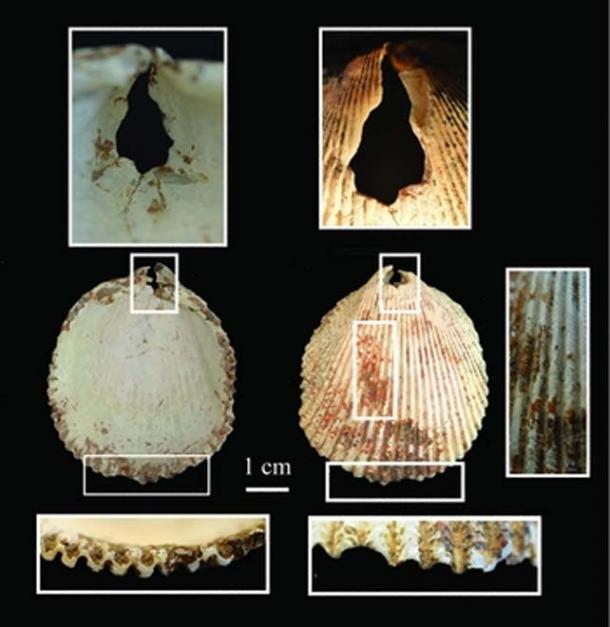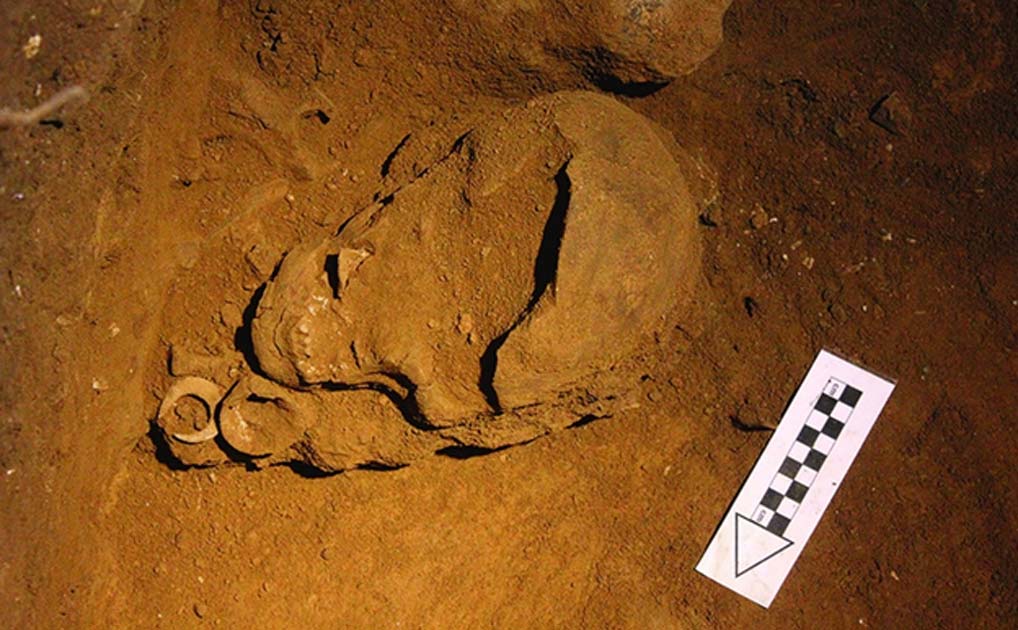World’s Oldest Funerary Fish Hooks Indicate Women Fished in Ancient Indonesia
Fishing was an important part of life, and apparently death as well, in the Pleistocene on Indonesia's Alor Island, northwest of East Timor. The collection of fish hooks placed alongside the remains of a woman who lived there about 12,000 years ago are the oldest known fish hooks to be found as part of funerary goods in the world. They also show there were some similarities – and some argue connections - between people living in the oceanic region at that time.
Before this discovery, the oldest known fish hooks included in a burial were dated to approximately 9,000 years ago, according to Phys.org. Those artifacts were found from the Ershi cemetery in Siberia.
The fish hooks included in the grave on Alor Island are five semi-circular artifacts made from snail shell. The journal article on the discovery describes the fish hooks as “[…] circular rotating hooks, in which the point curves inwards towards the shank, leaving only a narrow opening (gape) between the point end and the shank.”
- Gyotaku: A Unique Japanese Tradition in Which a Fish Becomes a Work of Art
- Mesolithic Fish and Chips? 8,000-Year-Old Meal Whets the Appetite of Russian Archaeologists

Circular rotating fish-hooks (A, B, C and E) found with the burial. (Sofía Samper Carro)
Archaeologists from Australian National University say that the discovery of the fish hooks alongside a female body (if the skeleton is confirmed as female) means it is necessary to reconsider the belief that men were the sole fish catchers on those islands so long ago. Perhaps the women of Alor Island were in charge of providing fish for their families. This corresponds with ethnographic records on fishing in Australia. As the article in the journal Antiquity on the discovery explains:
“In Australia, such hooks were made and used exclusively by women. A wealth of ethnography records their primary function as being for fishing. Spare hooks were occasionally worn around the neck and could be used to replace those lost or broken during fishing. None of the Alor hooks are barbed, and none have a notched shank for securing the line. Rotating hooks found in prehistoric contexts elsewhere in the world, along with ethnographic accounts of hook use, show that while some hooks have knobs or notches to prevent slippage of the line, many do not.”
The fish hooks found in the grave are similar to rotating hooks which were used in Japan, Australia, Arabia, California, Chile, Mexico and Oceania. While some researchers suggest similarities in technology provide evidence for human migration, cultural contact, or perhaps even fish hooks being left at various locations worldwide by migrating tuna, similar practices and artifacts do not necessarily mean cultures had direct contact. As the authors of the current study warn,
“Convergent technological evolution, whereby the same form of artefact develops independently in multiple, widely spaced locations because it is the most fitting form to meet the functional requirements of particular ecological conditions, is clearly possible.”
- Researchers trace origin of global fish trade in medieval London
- 5,000-year-old site used for fish processing and mysterious rituals involving wolverines and ermine
Apart from the fish hooks, a perforated bivalve was placed near the individual’s jaw. It is still uncertain about what the bivalve was used for, however an examination of the artifact shows “there is evidence of smoothing and polish, which may result from threading. There is also evidence of extreme wear and rounding on the ventral margin of the valve consistent with use for scraping, and there are traces of a red colourant on the surface.”

Bivalve Vasticardium cf. flavum (L) showing detail of the perforation at the umbo (above) and wear and rounding on the ventral margin. (O’Conner et al.)
This discovery emphasizes how vital fishing was for the subsistence of the people of Alor Island – a location where it was difficult to obtain other sources of protein. As Sue O'Connor from the School of Culture, History and Language in the ANU College of Asia and the Pacific told Phys.org:
“These are the oldest known fish-hooks associated with mortuary practices from anywhere in the world and perhaps indicate that fishing equipment was viewed as essential for transition to the afterlife in this area. The discovery shows that in both life and death, the Pleistocene inhabitants of the Alor Island region were intrinsically connected to the sea, and the association of the fish-hooks with a burial denotes the cosmological status of fishing in this island environment.”

A) Northern view of the volcanic ridge where Tron Bon Lei is located. The white arrow indicates the general location of the rockshelters (photograph by permission of Putu Yuda); B) pit B looking east from the southern edge of the rockshelter. (Samper Carro et al. 2016/ Elsevier)
Top Image: Tron Bon Lei cranium, photographed during excavation. Fish-hook A and perforated bivalve to the north of the mandible. Source: Sofía Samper Carro

















Comments
Why are anthropologist always astounded to find that women, historically, have not always been as powerless as they want us to believe? I remember a blond bimbo cultural anthropology professor from SOCAL that described American farm women as "...barefoot, pregnant and confined to the kitchen." I laughed out loud! I was raised in a farming community, whereas this "professor" obviously had never so much as MET an American farm wife. The women of our community not only worked alongside of their husbands and sons, but often were the brains behind the operation. HE looked to the cows, the land and the equipment. SHE kept the books and saw to the investments thus making an often unprofitable business profitable. The myth of the powerless woman in society was created in the 20th century and was based on often exaggerated "facts". Had you called my farmer grandmother "helpless" she would have broken a shovel handle over your skull!